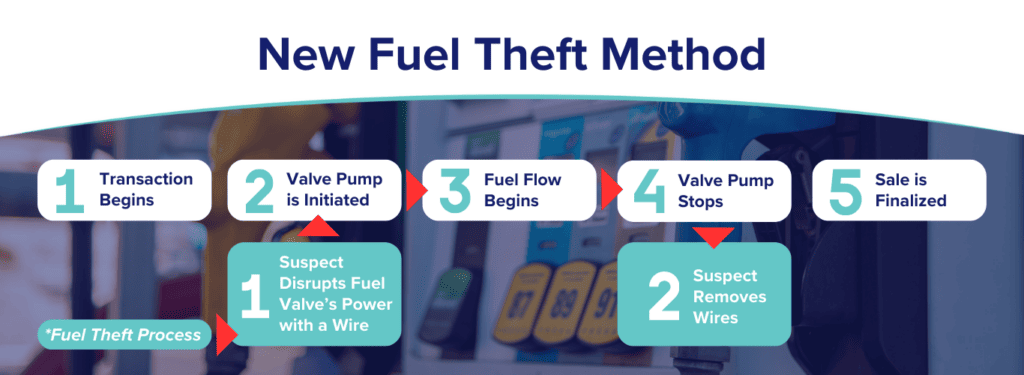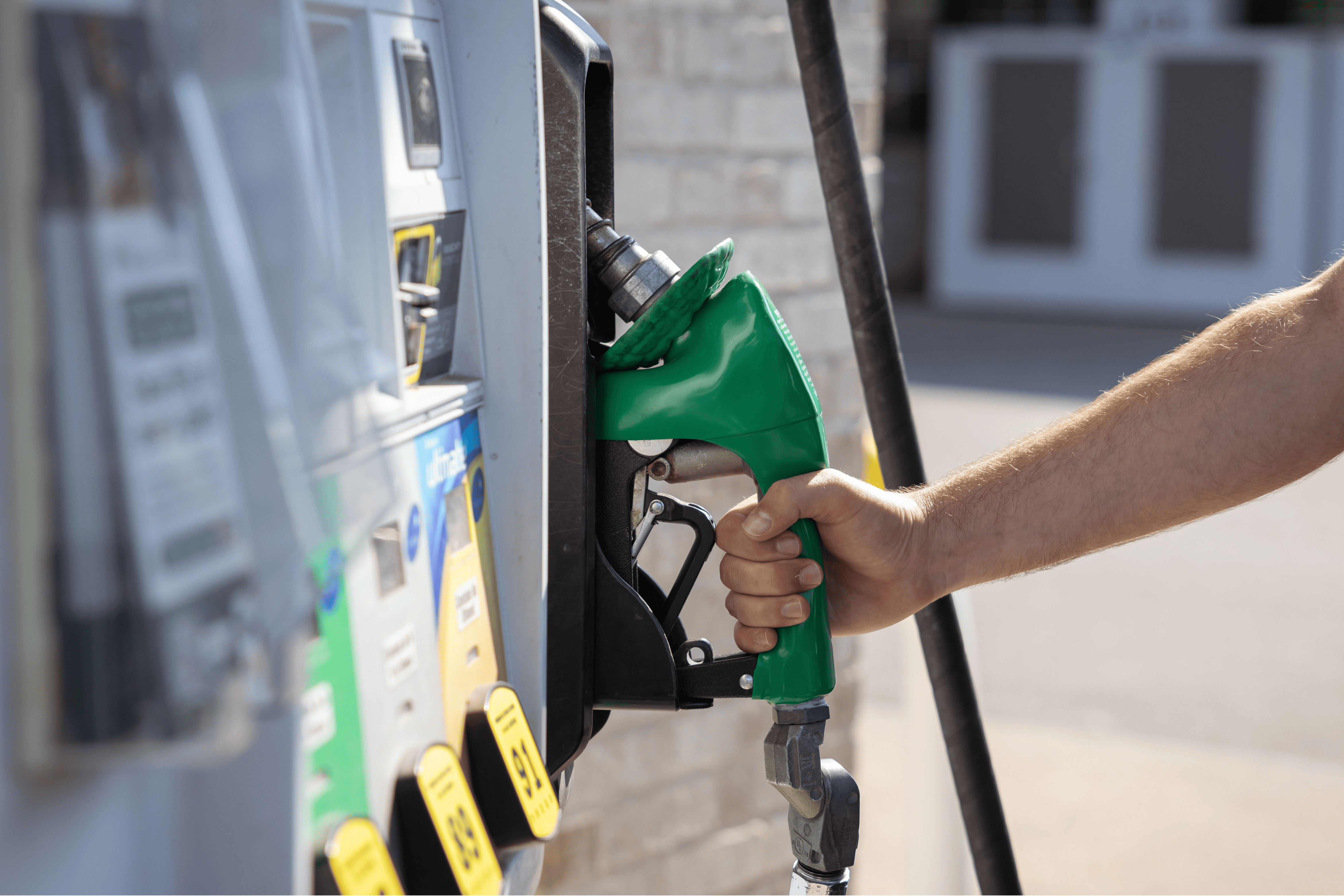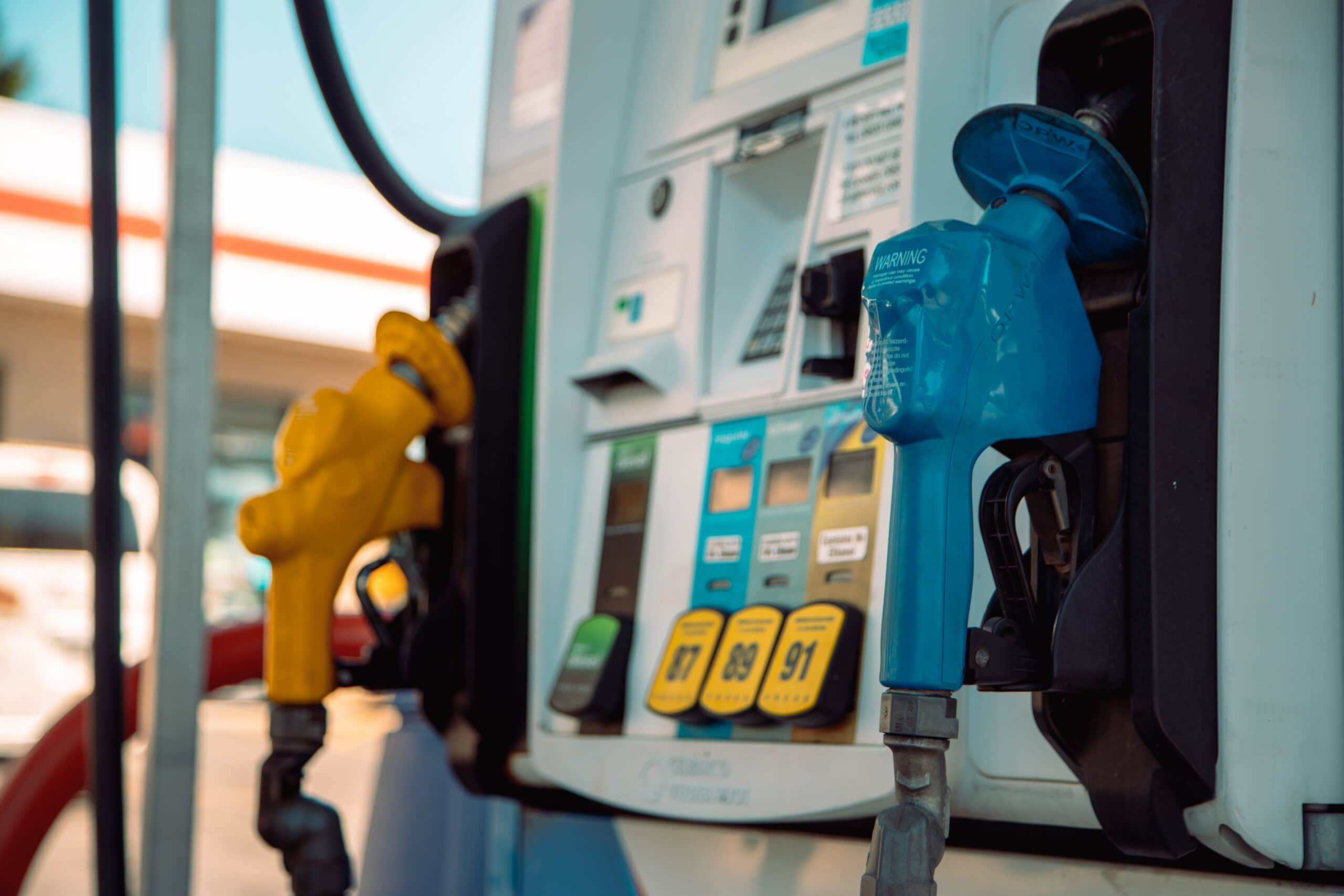Education Center / How Can C-Stores Prevent and Respond to Fuel Theft?
Blog
Category: Retail
How Can C-Stores Prevent and Respond to Fuel Theft?
Convenience store owners are constantly on the lookout—for new trends, offerings, and in this case, fuel theft. The Texas Financial Crimes Intelligence Center recently warned c-store owners of a new fuel theft method that could impact their site, regardless of what state they operate in. To help your c-store be better prepared, learn more about this new theft process, what preventative measures you can take, and how you should respond if fuel theft unfortunately happens at your site.
How Does This New Fuel Theft Method Work?
This process requires the suspect to access the inside of the fuel pump cabinet. From there, they use taps (or pigtails) and an external power source to connect the taps to the valve coil wire—ultimately disrupting the connection and the valve’s power source. The next step depends on the pump’s prestart settings.
- If the pump’s prestart is initiated, the suspect can dispense fuel freely by pulling the nozzle (if they power the valve with an external power source).
- If the pump’s prestart is disabled, the suspect simply must go to the other side of the dispenser, authorize the grade of gasoline that is powering the valve (which will activate the STP motor), and then they’ll be able to dispense fuel freely.

Six Tips to Help Prevent Fuel Theft
While no single (or combination) of these activities can guarantee theft won’t happen at your c-store, these six steps can reduce the likelihood of it occurring.
- Use site-specific dispenser locks. Many fuel theft methods require access to the inside of a dispenser cabinet; site-specific locks make this more challenging. Most dispensers have security locks you can order directly through your brand to ensure an exact fit. If you’re unsure if you have the site-specific locks or how to get started, your petroleum service equipment provider can help.
- Use security tape. Security tape (which you can get from major oil or your jobber) allows you to easily tell if your cabinet was accessed. You will either be able to see that the tape is broken or that it has been replaced. Since security tape is serial numbered, you should log the tape as you install it at a dispenser and compare that serial number, ideally daily, to ensure the thief hasn’t replaced it with a piece of their own.
- Perform manual reconciliation of gallons sold. Manual reconciliation is an easy way to identify discrepancies in gallons sold—and it can be performed daily. Once you have your tank’s daily starting volume, subtract your gallons sold and add on any gallons received (your deliveries). Next, compare that number to the end-of-day volume that’s showing on your tank monitor. If these values are different, you should investigate further.
- Monitor customer fill times. If it is taking your customer more than a few minutes to fuel at a pump, you should go out by them and see what is happening. If fuel theft is taking place, it can impact fill times.
- Keep your site clean and add security measures. It may seem basic, but it’s important to keep your site clean. Make sure it is well-lit, that you’re performing routine pump checks, and that your security cameras are not only set up, but working as they should. You should ensure your cameras are angled at what you need them to capture and that you aren’t erasing over them every twenty-four hours. Rather, allow yourself time to go back a few days and review any suspicious activity. Finally, since fuel theft can also happen by accessing your dispenser through the air gap grill, you can purchase a shield to block that access—making it so they can’t break the pulser linkage as easily.
Three Steps to Respond to Fuel Theft
Unfortunately, even if you follow all six of the above preventative measures, fuel theft may still happen at your convenience store. So, what then?
- Contact the authorities immediately—no matter your jurisdiction. If there is a repeat offender in your region who has committed fuel theft at other c-stores, the police are often already tracking it and may have leads you’re not aware of.
- Take that pump out of service and contact your petroleum equipment service provider. You should have them check for skimmers and ensure your other pumps are functioning correctly. You do not want customers to use the affected pump until the problem is resolved.
- Contact your insurance provider to see if you have any form of theft coverage. If you don’t but want to add it to your plan, it’s better to have that conversation with your insurance provider before theft occurs.
Next Steps?
As a convenience store owner, your relationship with your jobber can dictate how well prepared you are to respond to market variables like these. At U.S. Energy®, we’re positioned to support all facets of your business because our team members have been there too: running c-stores, working for petroleum equipment providers, and delving into new technologies. Through our direct access to major oil, our connections to those who are designing new programs and technologies, and our flexible financing options, we ensure your needs are met and your voice is heard. Reach out to learn how we can help you Stay Ahead® in the retail space.




